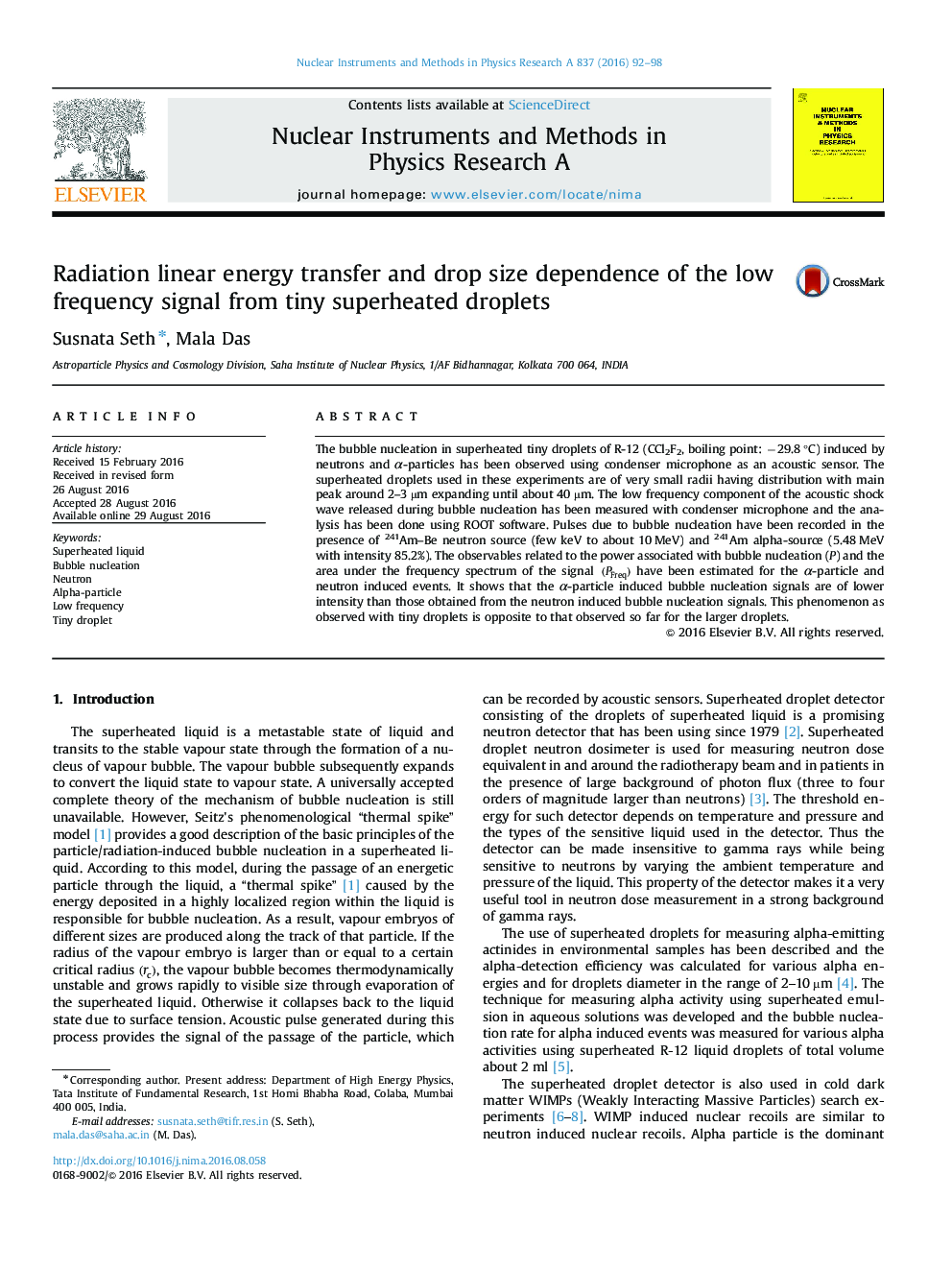| Article ID | Journal | Published Year | Pages | File Type |
|---|---|---|---|---|
| 8167985 | Nuclear Instruments and Methods in Physics Research Section A: Accelerators, Spectrometers, Detectors and Associated Equipment | 2016 | 7 Pages |
Abstract
The bubble nucleation in superheated tiny droplets of R-12 (CCl2F2, boiling point: â29.8 °C) induced by neutrons and α-particles has been observed using condenser microphone as an acoustic sensor. The superheated droplets used in these experiments are of very small radii having distribution with main peak around 2-3 µm expanding until about 40 µm. The low frequency component of the acoustic shock wave released during bubble nucleation has been measured with condenser microphone and the analysis has been done using ROOT software. Pulses due to bubble nucleation have been recorded in the presence of 241Am-Be neutron source (few keV to about 10 MeV) and 241Am alpha-source (5.48 MeV with intensity 85.2%). The observables related to the power associated with bubble nucleation (P) and the area under the frequency spectrum of the signal (PFreq) have been estimated for the α-particle and neutron induced events. It shows that the α-particle induced bubble nucleation signals are of lower intensity than those obtained from the neutron induced bubble nucleation signals. This phenomenon as observed with tiny droplets is opposite to that observed so far for the larger droplets.
Related Topics
Physical Sciences and Engineering
Physics and Astronomy
Instrumentation
Authors
Susnata Seth, Mala Das,
